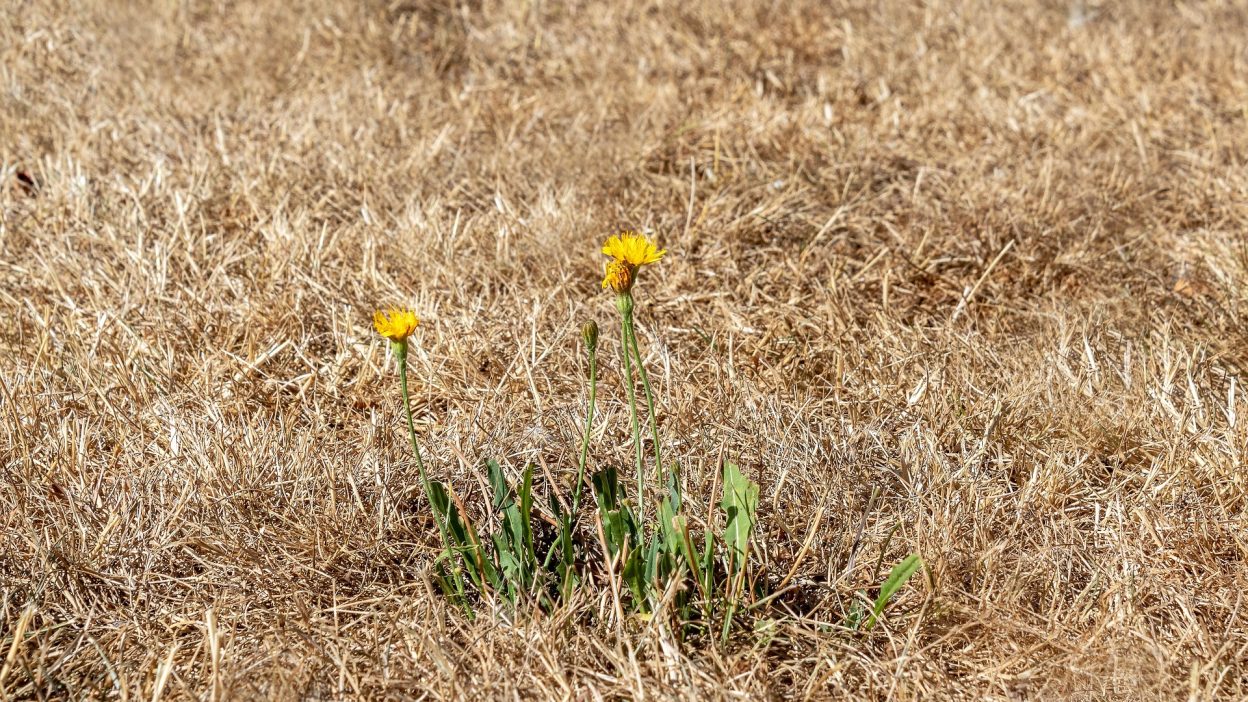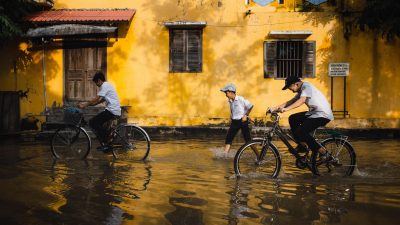When Scorching Winds Became a Silent Executioner
The 1998 Indian Heatwave was one of the deadliest climate disasters in the country’s history, claiming thousands of lives and leaving millions vulnerable. With temperatures soaring beyond 48°C (118°F) in some regions, the heatwave turned into a humanitarian catastrophe. The worst-hit states, Andhra Pradesh and Odisha, witnessed extreme suffering as people collapsed in the streets, water reservoirs dried up, and the government struggled to provide relief.
This tragic event was not merely a natural disaster—it was a crisis that could have been mitigated had early warnings been heeded. But with poor infrastructure, lack of preparedness, and limited government intervention, the heatwave became an executioner, silently preying on those with no escape.
1. A Nation Ablaze: How the 1998 Indian Heatwave Became a Deadly Inferno
The summer of 1998 was unlike any before. As early as April, temperatures began rising beyond the usual seasonal averages. By May, the conditions had become unbearable, with some regions recording temperatures over 48°C (118°F). The heat was so intense that roads melted, animals collapsed, and rivers evaporated into cracked, lifeless ground.
India, accustomed to hot summers, had never seen anything like this before. Unlike cyclones or floods, heatwaves are silent killers. People underestimated the severity until it was too late. Cities and villages saw thousands of deaths as people suffered heatstroke, dehydration, and organ failure. The sweltering heat even caused electrical transformers to explode, leaving entire communities without power, worsening the crisis.
The worst part? It could have been avoided—if only authorities had taken action sooner.
2. The Warning Signs Were There—Why Did No One Act?
Meteorologists had predicted an abnormally hot summer due to El Niño, a weather phenomenon known to increase temperatures. But these warnings were largely ignored. The government did not implement emergency measures, nor did it educate citizens on how to protect themselves from extreme heat.
Why was there no action? India, at the time, did not treat heatwaves as a major disaster. Unlike earthquakes or floods, heatwaves were seen as a seasonal inconvenience rather than a deadly threat. There were no heatwave-specific relief programmes, no water distribution systems in place, and no awareness campaigns to warn the population.
By the time authorities realised the scale of the catastrophe, it was too late. Hospitals were overwhelmed, morgues were overflowing, and relief efforts were uncoordinated. The failure to act turned a preventable disaster into a national tragedy.
3. A Trail of Death: The True Cost of the 1998 Indian Heatwave
The statistics paint a grim picture of India’s deadliest summer.
- Death Toll: Official reports state that over 2,500 people lost their lives, but the real number could be much higher. Many deaths in remote areas went unreported, especially among the homeless and rural communities.
- Hospitals Overwhelmed: Thousands of people were rushed to medical facilities, suffering from severe dehydration, heat exhaustion, and multi-organ failure. The healthcare system struggled to cope with the influx of patients.
- Rural Devastation: Farmers and labourers, who worked under the brutal sun, were the most affected. Many collapsed in fields with no medical help available.
- Hidden Casualties: The elderly, children, and homeless populations were hit hardest. Many were found dead in their homes, on streets, or at bus stations, unable to access water or shelter.
- Record-Breaking Temperatures: The heatwave saw Andhra Pradesh recording temperatures as high as 48°C (118°F), with many other regions crossing 45°C (113°F) for weeks. The extreme heat even caused railway tracks to warp and bend.
This wasn’t just a heatwave—it was a catastrophe.
4. Why Did Andhra Pradesh and Odisha Suffer the Most?
While several states suffered during the heatwave, Andhra Pradesh and Odisha bore the brunt of the disaster. These two states had a deadly combination of high temperatures, poor infrastructure, and economic vulnerability.
The majority of those affected were daily wage labourers, construction workers, and farmers, who had no choice but to work in the sun. Many of them lacked access to cooling systems, clean water, or medical aid, making them highly vulnerable to heat-related illnesses.
In rural villages, the crisis was even worse. Many families lost multiple members, as there was no relief effort reaching them in time. The devastation was silent yet brutal, with thousands perishing without any recognition.
5. How the 1998 Heatwave Crushed India’s Economy
The impact of the 1998 heatwave wasn’t just humanitarian—it was economic. The disaster crippled agriculture, damaged infrastructure, and disrupted industries, leading to massive financial losses.
Farmers were among the worst hit. The heat destroyed crops, dried up irrigation canals, and killed livestock. Many farmers sank into debt, leading to increased suicides in some areas. The financial ruin was devastating, pushing thousands of families deeper into poverty.
Power grids also collapsed under increased demand. As people tried to cool themselves with fans and air conditioners, blackouts became frequent, leaving millions without electricity. Entire industries suffered losses due to heat-induced shutdowns.
India paid a high price for ignoring the early warnings.
6. Who Was Responsible? Government’s Response Under Fire
The Indian government faced harsh criticism for its slow and ineffective response to the crisis. There were no heatwave policies in place, no structured relief efforts, and minimal international aid.
The public was outraged, questioning why no preventive measures had been implemented. Politicians, however, downplayed the disaster, focusing instead on other political matters. Many survivors were left with no compensation, their suffering largely ignored by those in power.
It was a national failure, one that exposed the country’s lack of preparedness for extreme climate events.
7. Survivors Speak: How People Fought to Stay Alive
- Water Shortages: Villages ran out of water, forcing people to drink contaminated sources, leading to widespread diseases.
- Makeshift Cooling Methods: People used soaked cloths, mud houses, and underground shelters to escape the heat.
- Deadly Work Conditions: Many workers collapsed mid-shift, unable to withstand the rising temperatures.
- Heatwave Myths vs Reality: Some believed applying mustard oil or staying indoors was enough, but these methods failed to provide real protection.
- Rescue Efforts: While the government was slow, local communities, NGOs, and volunteers stepped in to provide emergency relief.
8. The Media’s Role: Did They Reveal the Whole Truth?
The media played a significant role in shaping public perception of the 1998 Indian Heatwave, but their coverage was far from balanced. Some national newspapers sensationalised the crisis, using shocking headlines to grab attention, while others underreported the scale of the catastrophe, treating it as just another summer hardship rather than a major disaster.
One of the biggest failures of media coverage was the lack of investigative journalism into the government’s poor response. Few outlets questioned why no early warnings were issued or why no disaster relief was in place. Instead, many reports focused on heatwave survival tips, rather than exposing the systemic failures that led to thousands of preventable deaths.
Internationally, the disaster was largely ignored. Unlike floods, earthquakes, or cyclones that receive global attention and aid, heatwaves rarely make it to the front pages. As a result, India received minimal foreign support, leaving victims with even fewer resources. Had the media pushed harder, perhaps more pressure would have been placed on government agencies to act faster.
9. Did India Learn Anything? The Heatwaves That Came After
If the 1998 heatwave should have been a turning point for disaster preparedness, it wasn’t. In the years that followed, India continued to suffer from extreme heat events, and the same mistakes were repeated.
- 2002 Heatwave: Over 1,000 people died in Andhra Pradesh alone. Authorities once again failed to provide timely relief.
- 2010 Heatwave: With temperatures soaring to 50°C (122°F) in some areas, over 1,300 deaths were reported. The government still lacked a proper heatwave action plan.
- 2015 Heatwave: One of the deadliest on record, this heatwave killed over 2,500 people across India and Pakistan. Although the government finally started issuing heatwave warnings, relief measures remained inadequate.
Each time, the pattern remained the same—rising temperatures, slow government response, and thousands of deaths. Despite being one of the most heatwave-prone countries in the world, India continued to react too late.
The lack of long-term planning has left the country vulnerable to future disasters. While awareness has improved, rural areas remain defenceless, and millions of Indians still work in dangerous heat conditions with no access to cooling or medical care.
10. The Inevitable Future: Is India Ready for More Deadly Heatwaves?
As climate change accelerates, deadly heatwaves are becoming more frequent and intense. Scientists predict that by 2050, heatwaves in India will become even longer and deadlier, with some regions facing unliveable conditions. The 1998 heatwave was a warning, but has India done enough to prepare for the next disaster?
Several challenges remain:
- Urban areas are overheating: Cities are becoming heat traps due to concrete structures, lack of trees, and high pollution levels. Without cooling solutions, cities will face even higher death tolls in future heatwaves.
- Rural communities are still defenceless: Farmers, construction workers, and labourers remain the most vulnerable, yet little effort has been made to protect them.
- Healthcare systems are unprepared: Heat-related illnesses are not treated as a priority, leaving hospitals overwhelmed every time a major heatwave strikes.
While India has introduced some policies, such as early warning systems, heat shelters, and water distribution programmes, these efforts remain small-scale and reactive rather than preventive. Unless India invests heavily in heatwave preparedness, the next disaster will be even worse.
The question is not if another deadly heatwave will strike—but when. Will India be ready this time? Or will history repeat itself once again?
FAQs
1. How many people died in the 1998 Indian Heatwave?
Over 2,500 people officially died, but the true number may be much higher, as many deaths in rural areas went unreported.
2. What caused the 1998 Indian Heatwave?
The extreme temperatures were mainly caused by El Niño, a climate phenomenon that intensifies heat. Lack of government preparedness made the disaster worse.
3. Which states were worst affected?
The hardest-hit states were Andhra Pradesh and Odisha, where temperatures exceeded 48°C (118°F), and thousands of people died or suffered heat-related illnesses.
4. Did the Indian government take action?
The government was slow to respond, and no major heatwave policies existed at the time. Only after repeated disasters did India start developing early warning systems and relief plans.
5. Could another deadly heatwave happen in India? Yes, and it is highly likely. Due to climate change, heatwaves in India are becoming longer, more frequent, and deadlier, making future disasters inevitable.




